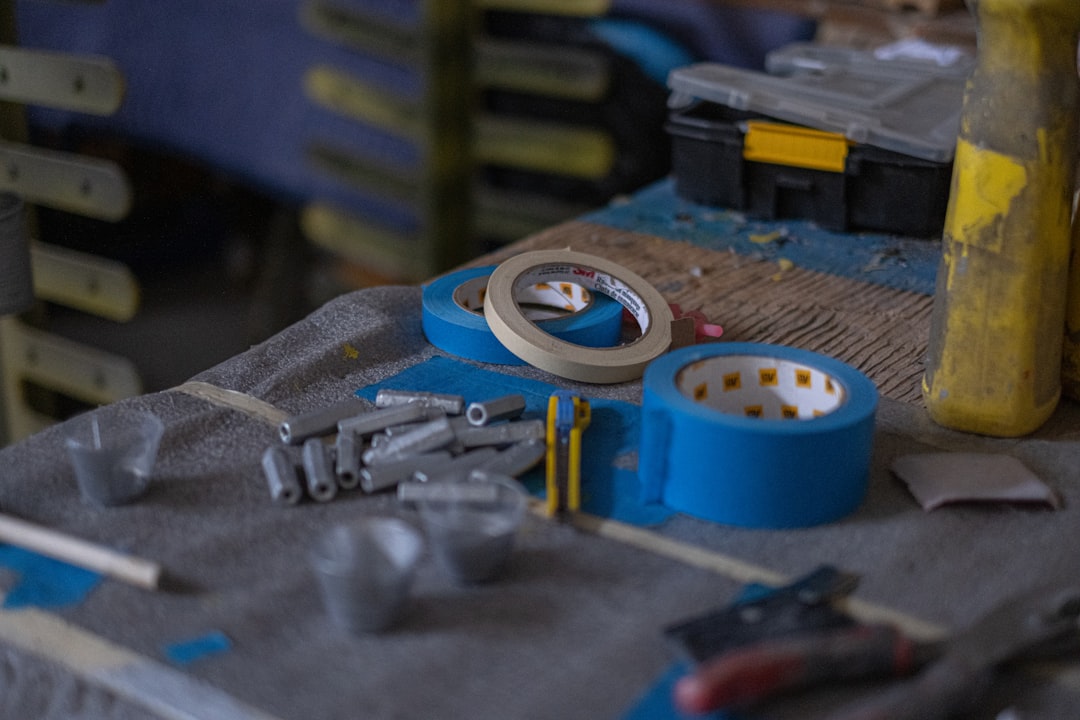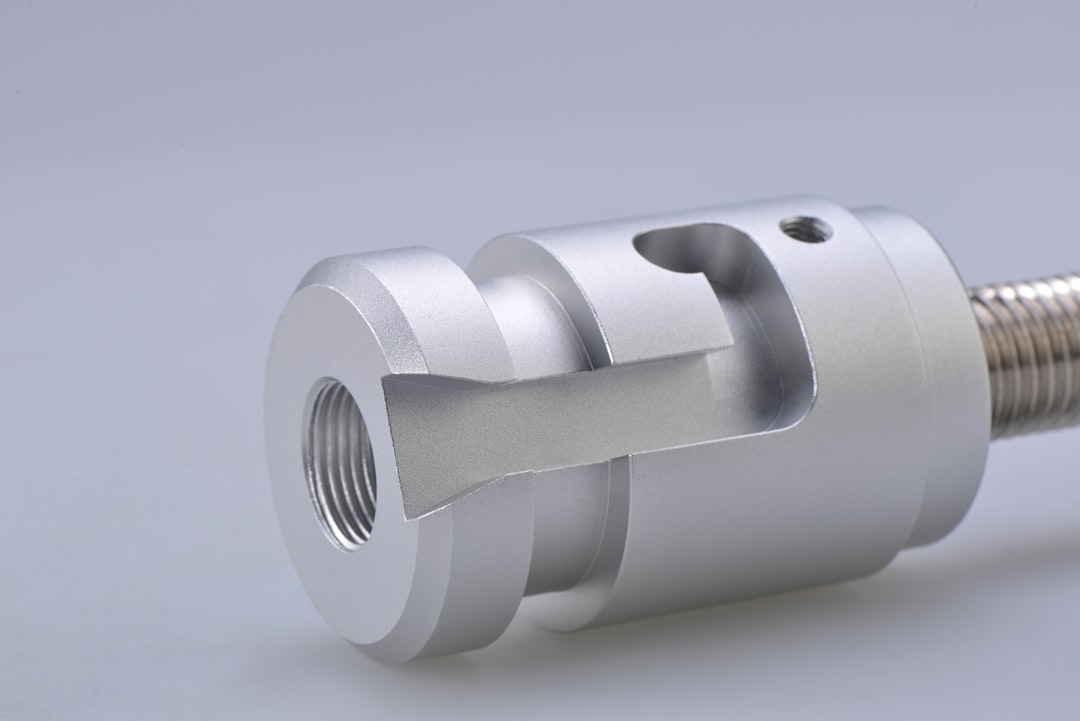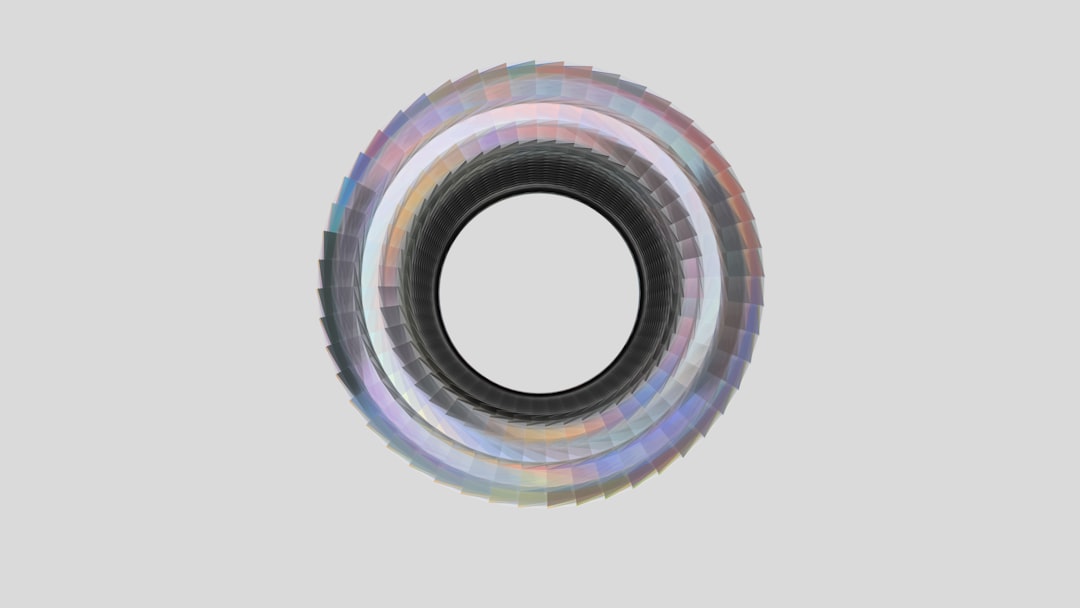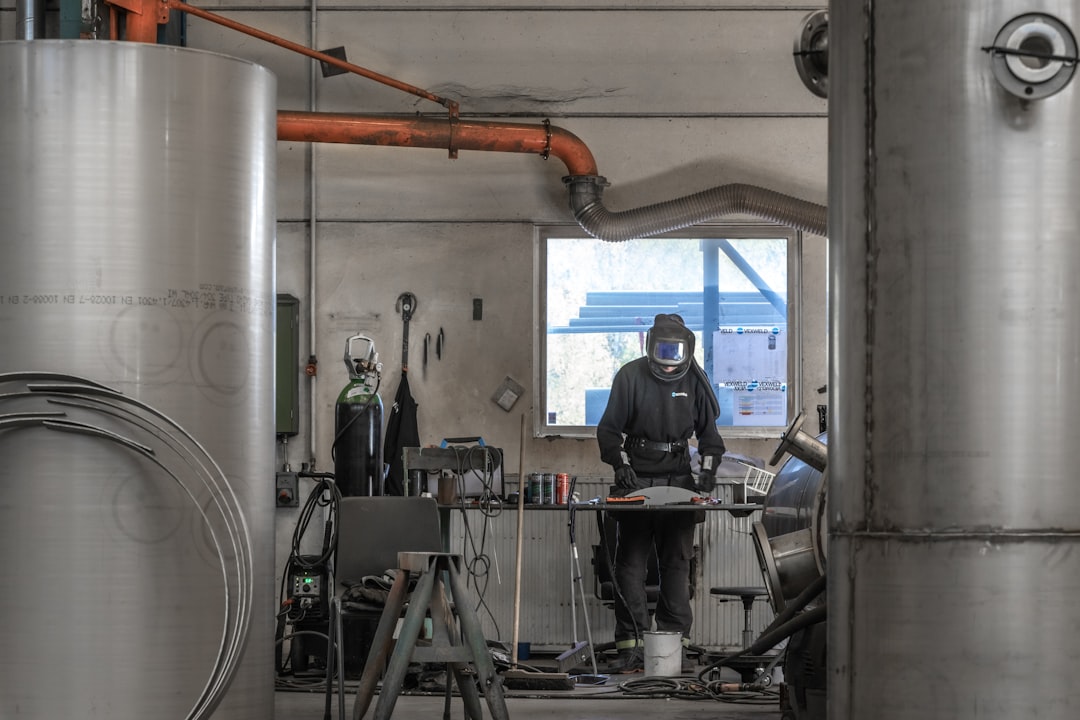

Engage prospects with a scan and streamline customer engagement with FREE QR code marketing tools by Sona – no strings attached!
Create a Free QR CodeFree consultation

No commitment

Engage prospects with a scan and streamline customer engagement with FREE QR code marketing tools by Sona – no strings attached!
Create a Free QR CodeFree consultation

No commitment
Tube fabrication services form the backbone of precision manufacturing, supplying industries with custom pipe and metal tube components vital to aerospace, commercial construction, and automotive sectors. Despite progress in areas like laser tube fabrication and advanced bending, day-to-day business remains hindered by legacy, paper-heavy workflows. From brochures to manual order forms and static handouts, these traditional tools make it hard to track prospects and often result in leads slipping through the cracks because they are never recorded in a CRM or critical information is not captured in time.
QR codes have emerged as a practical bridge for metal tube and pipe fabrication companies to modernize customer engagement. By embedding QR codes on collateral, shop signs, and equipment labels, manufacturers unlock a direct, data-driven connection between their physical assets and digital engagement, giving buyers immediate access to specs, certifications, or quoting workflows, while enabling teams to capture actionable data about visitor intent and stage in the buying journey.
With QR code integration, tube fabrication operations can improve the customer experience and close major visibility gaps that have historically resulted in missed opportunities. The following strategies show how QR codes and the platforms that power them are changing the game for lead generation, actionable insights, and long-term growth in the industrial supply chain.

For many fabrication businesses, high-value prospects are lost simply because interest is not tracked as it happens, resulting in late, incomplete, or missed follow-up. QR codes offer a direct solution by making every offline engagement, from trade shows to equipment walkarounds, a prompt for digital action. This reflects a wider trend in the industry: teams can no longer rely solely on printed data sheets or one-size-fits-all forms, which too often leave valuable leads untracked and out of the sales pipeline.
Replacing analog processes with QR-enabled experiences turns static touchpoints into measurable interactions. Paper sign-up sheets become scan-to-form workflows via Google Forms QR that instantly log to your CRM. Printed spec binders become living libraries of dynamically updated data sheets with version control. Handwritten booth notes become tagged, attributed scans that route to the correct sales engineer. The result is faster speed to lead, higher data quality, and less manual administrative work for teams already stretched thin.
By implementing QR codes across these channels, tube fabricators gain both efficiency and deeper insight, turning formerly anonymous or missed touchpoints into actionable leads and reducing the frustration of untracked prospect interactions. When you design codes with intent and integrate scan data into your systems, you create a measurable path from first interest to qualified opportunity.

Fabricators face distinct challenges in linking offline marketing and field sales to real customer insights. Too often, the lack of visibility into who picks up a brochure, scans a catalog, or glances at a booth means potential leads remain anonymous, making it nearly impossible to tailor follow-ups or measure campaign impact. These gaps can add up to substantial opportunity costs, especially when competitors are ready to engage the same accounts.
QR codes address this visibility gap by making every print or physical asset interactive and trackable. Engineers tired of hunting for ASTM material certificates or mill test reports can scan a code to access the latest documentation. Procurement teams can launch a structured quote request directly from a flyer or invoice. Maintenance teams can initiate service tickets from a code on a machine placard. Each scan yields data on timing, location, and intent, enabling precise follow-up and stronger account intelligence.
With QR codes, tube fabrication services gain traceability and control across the buying journey. You move from guesswork to insight, from paper bottlenecks to digital workflows, and from one-size-fits-all materials to personalized experiences that convert.

A continuing pain point across the sector is matching the right content with the right buyer, especially when user intent is hard to discern. Teams struggle when field staff cannot tell which technical document, catalog section, or spec file is actually relevant to a prospect’s stage in the procurement process. A versatile QR toolkit solves this by mapping code formats to actions that suit each role and buying stage.
For tube fabricators, the most useful formats are those that connect scanners to technical content, sales conversations, and service workflows. The choice of format shapes the user experience and the data you can collect, which is why dynamic, editable codes are usually preferred in fast-moving environments.
Dynamic codes managed in a platform like Sona QR let you update destinations, run A/B tests, and track performance without reprinting. Static codes work for fixed destinations, such as a permanent safety video or a generic company profile, but they limit analytics and cannot be changed after deployment.

Traditionally, tube fabrication services have been challenged by their inability to follow the customer journey past the initial face-to-face or print encounter. This leads to a high risk of missed leads and limited visibility into which channels or assets drive real pipeline activity. The key is to place QR codes where they intercept existing behavior and add value in the moment.
Strategic placement becomes especially impactful when aligned with high-intent touchpoints. Think about where engineers, buyers, and technicians already interact with your materials and products, then ensure each interaction offers an immediate digital next step. Prioritize placements that shorten cycles, reduce friction, and create measurable outcomes such as RFQ submissions, sample requests, or service tickets.
By mapping common touchpoints to QR-based workflows, tube fabricators can capture more of the journey, build on otherwise overlooked growth areas, and surface high-fit accounts much earlier in the buying process. Every scan becomes a measurable signal that informs what to do next and who should do it.

Persistent industry pain points include late or incomplete lead capture, difficulty surfacing upsell or cross-sell opportunities, and lack of post-delivery support insights. QR codes address these with focused use cases that meet buyers where they are and connect them directly to the next best action.
To maximize impact, design each QR deployment with a clear user story: who is scanning, what they need in that moment, and how your team will respond. Match destinations to the scanner’s role and context so the experience feels effortless and valuable.
Each use case ties back to a clear objective: capture intent, accelerate decisions, and document engagement. Over time, scan patterns reveal which industries, parts, or processes generate the strongest demand, guiding investment decisions and sales focus.
A significant challenge for many tube fabrication marketers is the inability to segment and retarget potential buyers with precision, especially when much of the early journey is anonymous or fragmented across offline encounters. Without this visibility, re-engagement relies on guesswork, often missing high-value accounts or mistiming follow-ups that could have led to quoting opportunities.
QR campaigns solve this by turning scan behavior into segmentation signals. With unique codes for each channel, placement, and topic, you can build audiences that reflect buyer intent and stage. For tube fabrication, this often means differentiating engineering evaluators from procurement decision makers, or separating post-sale users from new prospects. Each segment can receive relevant content, such as tolerance calculators for engineers or lead time updates for buyers.
With platforms like Sona QR, each code becomes a smart entry point, capturing data that informs how and when to follow up. You stop treating all scanners the same and start engaging them with the right message at the right time.
A persistent frustration for tube fabrication businesses is the fragmentation between physical and digital marketing, which makes it hard to track which tactics actually create pipeline and which print campaigns go unmeasured. When teams lack integration, budget allocation and campaign design become a guessing game that favors habit over performance.
QR codes connect the dots by giving every channel a direct line to digital action and unified analytics. When brochures, direct mail, shop signage, digital displays, and packaging each carry unique codes, you can attribute scans and outcomes with clarity, see offline attribution, and optimize spend in-flight. You can also automate follow-up immediately after a scan so prospects never wait for next steps, which shortens the sales cycle and raises win rates.
QR codes serve as the offline onramp to your digital marketing engine. They also unlock a new layer of data collection across channels that were once difficult to measure. With a centralized platform like Sona QR, you can manage all your codes, monitor performance, and sync scan data with your CRM and ad platforms for a connected funnel.
Launching an effective QR initiative in tube fabrication requires clarity on goals, smart selection of code types, thoughtful design, disciplined deployment, and rigorous measurement. Treat the campaign like a product launch: define who you are helping, what problem you are solving, and how you will validate success.
The steps below translate best practices into an industrial context, replacing paper-heavy processes with faster, traceable digital flows. Use them to pilot at one event or work cell, then scale across your shop and marketing programs.
Proving the effectiveness of offline marketing has long been a struggle for tube fabrication companies, with limited ways to connect diverse touchpoints such as print collateral or shop signage to concrete revenue outcomes. This makes it difficult to confidently allocate marketing budgets or advocate for increased spend on campaigns that actually work. With QR codes, you can finally link physical engagement to pipeline and revenue.
Modern QR analytics deliver actionable insight instead of vanity metrics. Real-time dashboards show which assets pull in the most scans, which geographies or industries engage, and how many scanners convert to RFQs or meetings. Journey mapping links first scan through to closed-won, revealing the sequences of content and follow-up that correlate with success. These insights help you optimize placements, messaging, and sales coordination.
Sona QR captures real-world engagement. Sona.com turns that engagement into insights you can act on, helping you connect scans to revenue and make QR codes part of your performance marketing strategy. With this level of visibility, tube fabrication businesses can justify spend, double down on winning channels, and improve coordination between marketing and sales.
Scaling your QR program from a pilot to a company standard requires both operational rigor and creative deployment. The goal is to keep experiences simple for scanners while deepening your data and automation behind the scenes. Choose tips that align with your most common media, your buyer journey, and your stack.
Focus on clarity, context, and momentum. Make scanning intuitive with benefit-led CTAs, ensure destinations match the role and situation, and keep buyers moving forward with instant follow-up. Over time, your library of codes becomes a strategic asset that documents what works and why.
Following these strategies, tube fabrication firms can build a scalable, measurable, and agile QR code system that addresses historical lead capture challenges, improves retention, and expands revenue. The payoff grows with each new placement and integration that turns physical interactions into digital momentum.
QR codes have become a linchpin for tube fabrication services aiming to move beyond analog marketing and disconnected sales journeys. By transforming every physical asset into a measurable touchpoint, these companies gain the power to capture interest faster, precisely retarget high-value prospects, and respond quickly to changing buyer needs. The result is a tighter feedback loop, stronger alignment between teams, and a more modern customer experience.
Teams that unify QR-based lead capture, intent data, and CRM integration are positioned to outperform competitors that rely on paper and memory. You can shorten sales cycles, reduce follow-up latency, and personalize outreach at scale. You can also tie marketing investment directly to revenue outcomes, closing long-standing attribution gaps that make industrial marketing harder than it needs to be.
As tube fabrication services embrace the next generation of engagement, every surface, from equipment tags to trade show flyers, becomes a gateway for digital connection and measurable growth. With Sona QR, you have everything you need to capture demand at the source, sync it to your systems, and convert it into results you can prove. Start creating QR codes for free.
QR codes have revolutionized tube fabrication services by transforming complex workflows and customer interactions into seamless, trackable experiences. Whether it’s streamlining access to detailed fabrication specs, enhancing quality control, or accelerating project timelines, QR codes replace cumbersome paper-based processes with instant, mobile-friendly access to critical information. Imagine instantly knowing which fabrication stages need attention or which clients engage most with your project updates—empowering you to act swiftly and efficiently.
With Sona QR, you can create dynamic, trackable QR codes in seconds, update information on the fly without reprinting, and connect every scan to measurable outcomes like project completion rates and client satisfaction. No more guessing or delays—just smarter, data-driven tube fabrication management. Start for free with Sona QR today and turn every scan into a catalyst for precision, productivity, and profit.
Common QR code formats include web links to specs and quoting tools, vCards for contact sharing, form links for RFQs, document downloads for CAD files and certifications, service portals for maintenance, and pre-filled email or SMS messages.
Focus on services that offer seamless lead capture, dynamic content updates, quality control, and integration with CRM systems to ensure efficient communication and support tailored to your project needs.
Materials include various metals suitable for aerospace, commercial construction, and automotive applications, supported by certifications like ASTM and mill test reports accessible via QR codes.
Custom tube fabrication provides precise, role-specific technical content, faster lead capture, dynamic updates, and improved post-sale support, enhancing customer experience and operational efficiency.
Lead times vary, but QR code-enabled workflows help accelerate processes by allowing immediate access to quotes, specs, and direct communication, reducing delays in decision-making.
Costs can differ based on service flexibility, use of dynamic QR codes, integration capabilities, and quality control measures, with efficient digital workflows often reducing administrative expenses.
Quality control includes providing up-to-date certifications, weld procedure qualifications, and material test reports accessible via dynamic QR codes to ensure compliance and traceability.
By accessing precise technical specs, maintenance guides, and warranty claims through QR codes on product labels and packaging that support proper handling and service.
Tube fabrication serves aerospace, commercial construction, automotive sectors, and others requiring custom metal tube components with precise tolerances and certifications.
Use QR code-enabled access to CAD models, tolerance charts, and direct communication with sales engineers to verify design feasibility quickly and accurately.
Use Sona QR's trackable codes to improve customer acquisition and engagement today.
Create Your FREE Trackable QR Code in SecondsJoin results-focused teams combining Sona Platform automation with advanced Google Ads strategies to scale lead generation

Connect your existing CRM

Free Account Enrichment

No setup fees
No commitment required

Free consultation

Get a custom Google Ads roadmap for your business






Launch campaigns that generate qualified leads in 30 days or less.
